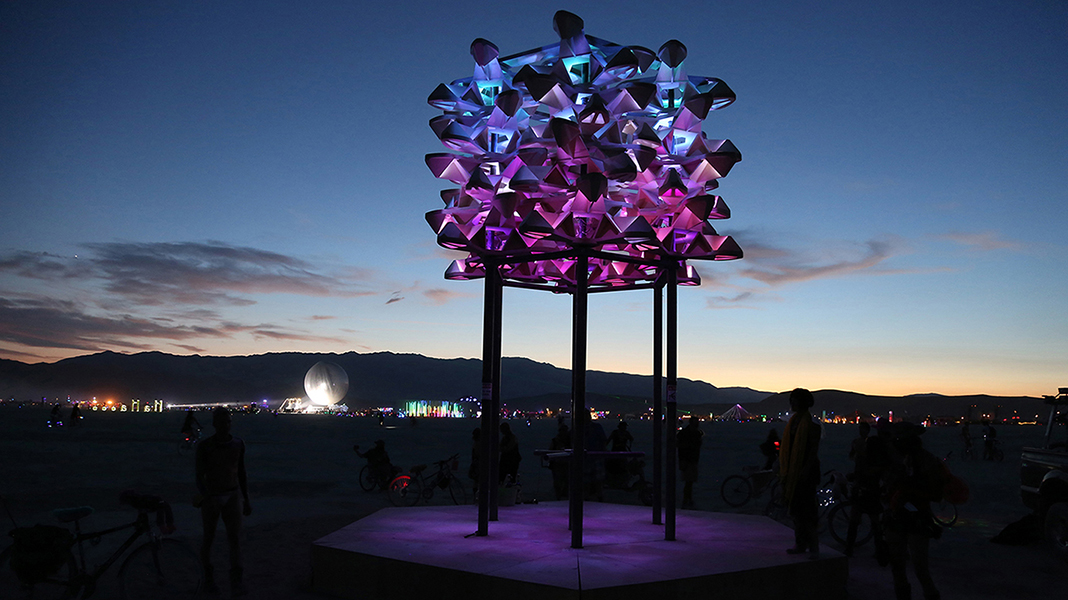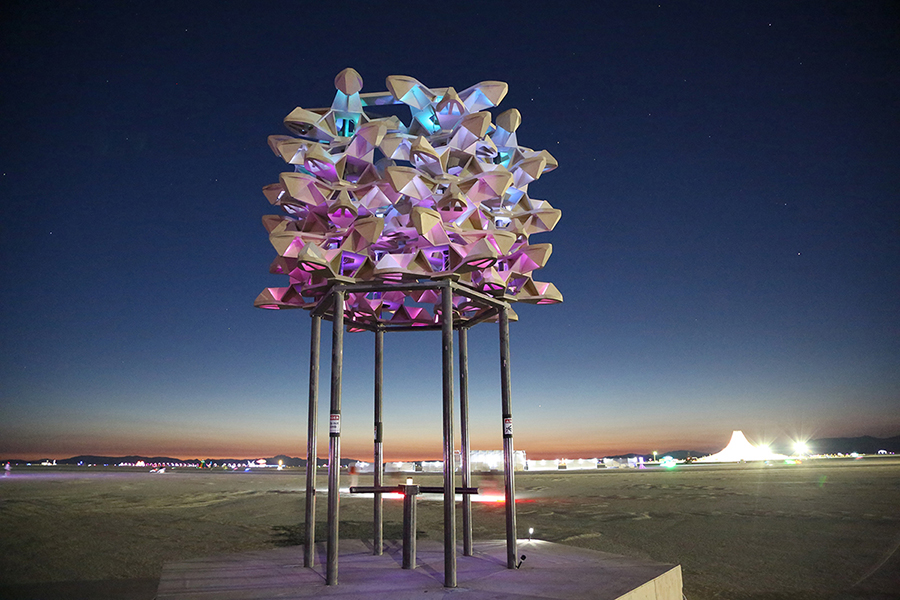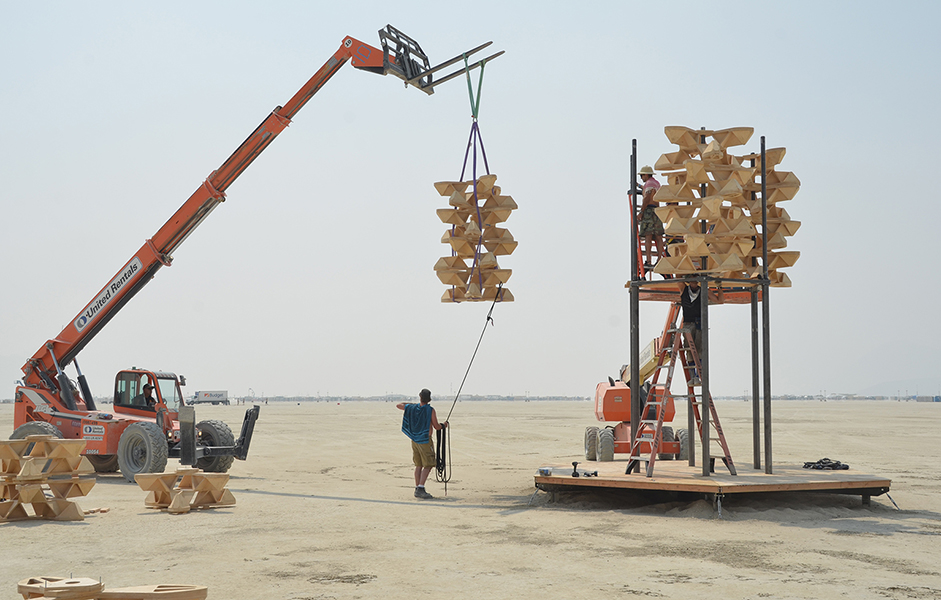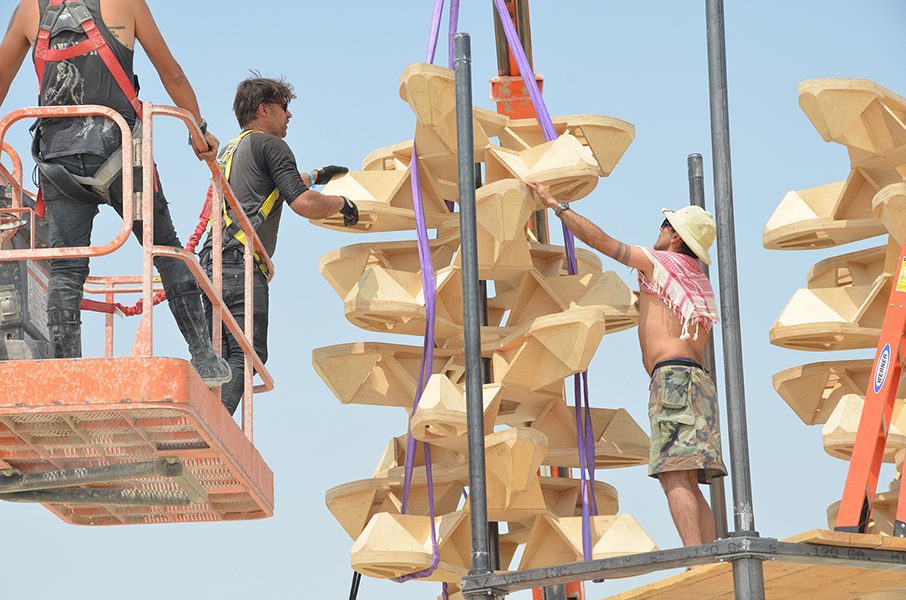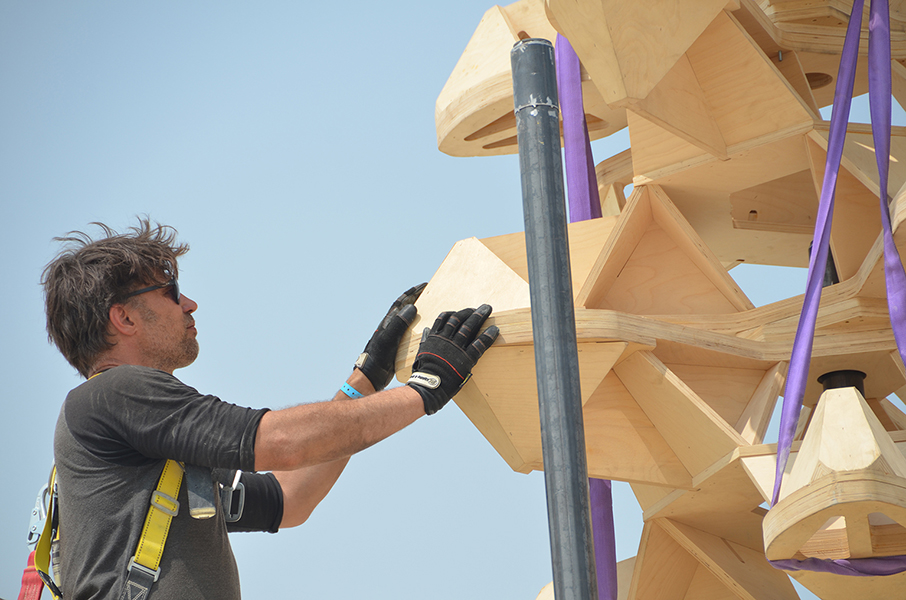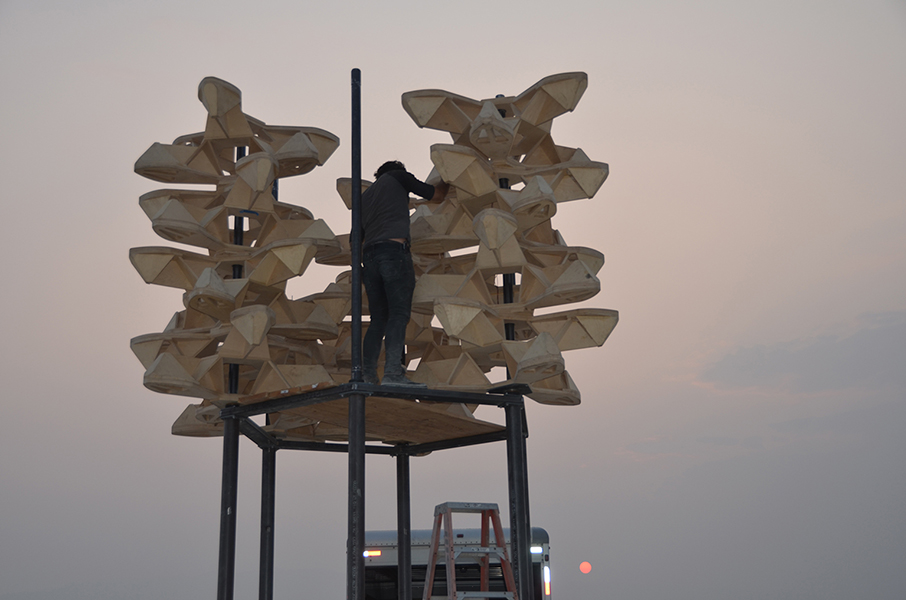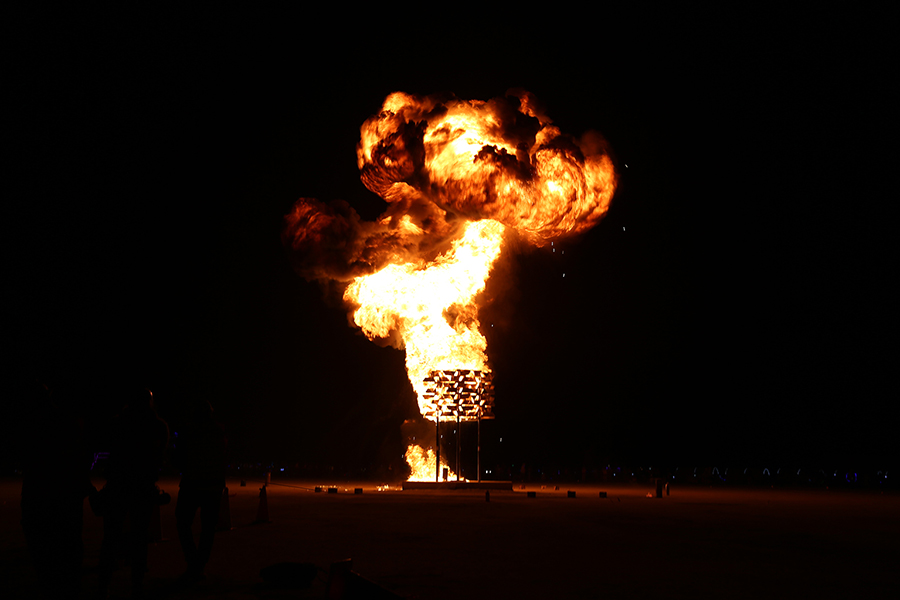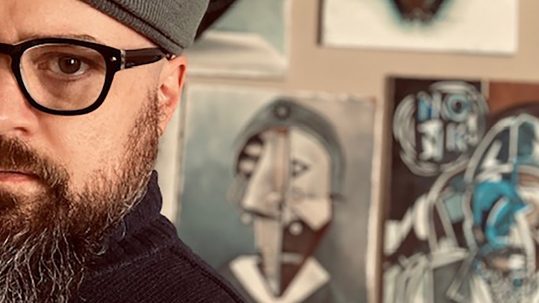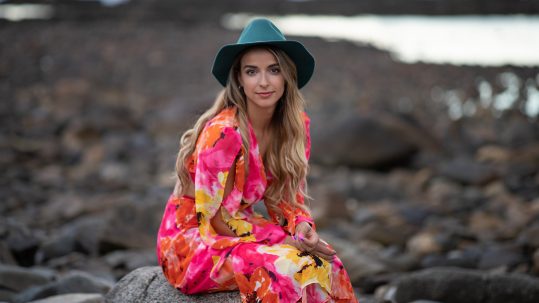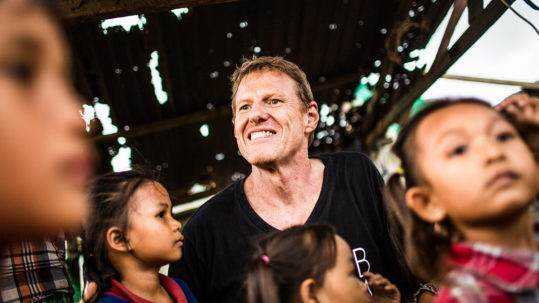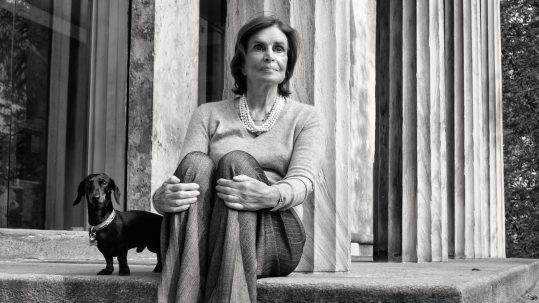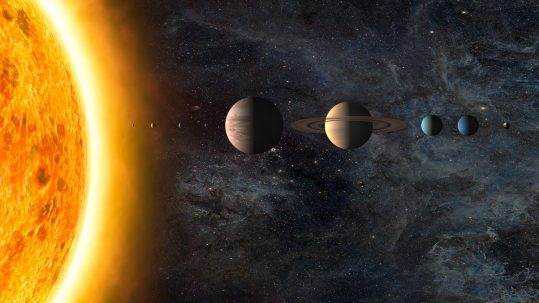
06 Feb Jakob Bokulich
Photo by Abigail Tse
JAKOB BOKULICH
Inspired by the depth of existence and the people populating his life, New York-based painter Jakob Bokulich is an unclassifiable artistic figure whose various talents range from painting to kinetic sculpture, from acting and filmmaking to writing. Praised by his peers and celebrated by a steadily growing international clientele, Bokulich has quickly gathered a committed following of admirers for his original works that advocate the most avant-garde imagination.
By Victoria Adelaide | February 08. 2021
Victoria Adelaide: When did you first become interested in art?
Jakob Bokulich: I’ve been interested in art for as long as I can remember. When I was a child, I was obsessed with drawing. I did my first oil painting when I was 12. I grew up in a pretty rigid religious family. However, my parents loved classical art, so, as a child, I found a sense of freedom and a way to express that through painting and art. At that time, my family’s house burned down, and with eight children, my parents had to find different places for all of us to stay. My brother and I stayed for a while at an artist’s house; his name is Art Danner. He showed me his studio, the way he worked, and that cemented the idea that I wanted to be an artist. I bought a small canvas, one tube of black paint, one tube of white paint, and I did my first painting.
VA: I’m sure this artist had a significant impact on you; besides him, which artists inspired you the most?
JB: He was very important at the time. I had two teachers from whom I learned tremendously: Charles Wolters, my painting teacher in high school, and Howard Ikemoto, my drawing teacher in college. As a teenager, I Iooked up to artists such as Francisco Goya, Cézanne, Gauguin, Gustav Klimt, Egon Schiele, Jack Levine, and Honoré Daumier, who made a lot of social commentary through their art. I loved El Greco and Picasso’s Blue Period. Then I discovered Francis Bacon, which was a guiding light for me, as a painter and an artist, until I saw a retrospective of Rothko’s work, which added a whole new dimension to my ideas on painting. Those two painters, Francis Bacon and Rothko, have always been the most important for me. Later I saw a retrospective of Joseph Beuys, and that completely rocked my world. It led me to start questioning the purpose of painting and of my art. Was I only painting ornamental decorations for people’s walls? Eventually, I stopped painting for three years to explore the different meanings of my craft.
Paintings: Jakob Bokulich.
VA: What are the questions and the main message behind your art, if there are any?
JB: That’s difficult to pin down into a concise answer—just for the mere fact that painting is a different language; it’s a language of images as opposed to words. I see a painting as both a mirror and a window, and I explore that. I aim to express an emotion. For example, I wish to paint the setting sun but without depicting the setting sun or to paint someone and make it feel real using completely imaginary colors. I’m looking at what experience is, the beauty of it all, and that’s what I want to convey.
VA: You are also a sculptor, and in 2017, you exhibited Big Pollinator, a kinetic sculpture, for the first time at Burning Man. Then in 2018, you created a much bigger sculpture. What was the creative process, and how did you come up with the idea?
JB: It came from a vision that I had at Burning Man. As a painter and as someone who has worked in films and writing, none of those mediums are optimal for Burning Man, which is a place for interactive experiences and large-scale sculptures. I had wanted to bring something there for years, but I never felt that I had an appropriate idea for the environment. I only had the vision of this sculpture, which is what the Pollinator is. It would be interactive; people would turn the mechanism, and the mechanism would turn itself some more, so you could imagine almost an infinite number of gears working in synchronicity. I worked through countless drawings of what I had envisioned, but converting them into a three-dimensional entity was, in some ways, almost physically impossible. I worked with my ex-girlfriend’s father; he knew the software and rendered my ideas into three dimensions. Then, my friend Matthew Davis came to help, and he was vital to the whole process. The sculpture would not have happened without him.
VA: How many people were involved in the project?
JB: We had about 40 volunteers to help fabricate the sculpture in San Francisco and Oakland. Another crew of over 20 people helped install it and provided infrastructure at Burning Man. And then, there were over a hundred people to oversee the fire and flame effects.
VA: How long did it take the create this sculpture?
JB: The first drawing I had done was in 2012, so that would be six years. But the actual fabricating and the physical work took about six months, and prior to that, maybe three months of planning and designing. That’s not counting the time that came before that, doing the initial sculpture in 2017, and so on.
VA: Wasn’t it hard to see it burning after so many months of intense work?
JB: It wasn’t hard; it was more of a celebration watching it burn. The idea was that the fire would be an extension of the sculpture. As the sculpture was spinning, it would be feeding the fire, which in turn would consume the sculpture. It was a beautiful thing to watch. There was something mystical about the whole experience.
VA: That’s interesting, as we could compare it to life itself and accept that it will arrive at an end at some point. It’s almost like a spiritual experience.
JB: Yes, it is. That wasn’t at the forefront of my mind when I was building it; I was more concerned with executing this vision that I had. Afterward, that meaning became more evident to me, that it is a reflection on the impermanence of life, the impermanence of everything. Sometimes life imitates art. The sculpture was a catalyst for all these major changes in my life. I can’t even describe how different my life is from what it was before.
VA: You experienced war in Croatia in your youth. You said, “My experiences there left me with a sense of urgency — one that has kept me searching, working, and revising ever since.” How did it affect your life?
JB: You could sum up the experience of war as an experience of shock—a shock to your system, a shock to everything. I remember one pivotal moment that I had in Croatia: I was in a war zone with my friends, and they were talking about how they weren’t paying much attention to politics, even if they knew that there was this political turmoil going on. Then one day, they were having coffee, and all of a sudden, they saw bombs dropping across the bay. That, to me, was a moment when I realized that our sense of stability and normalcy is much more precarious than we think it is. Because these were people like me, I could totally see myself being in their shoes.
Big Pollinator Burning Man 2018 || Photo 1 by Jakob Bokulich | Photo 2, 8 & 9 by Josh Keppel | Photo 3 by Nikki Haroldson | Photo 4, 5, 6 & 7 by John Haroldson
VA: Yes, and also to realize that life hangs by a thread; today we’re here, but we may not be here tomorrow.
JB: Exactly! That’s something I wrestle with almost every day these days. I know many people who have died in the last year. Not all of them died from Covid-19; however, there is something about the times where it seems like people have just decided to check out. I think of Croatia during the war, and of now, when you have these major events happening, and you realize that we are all characters in history.
VA: You just mentioned Covid-19; you spoke about your experience in Croatia during the war and the sentiment of uncertainty that it created. Do you think that a parallel could be drawn between both situations when we reflect on the impermanence of existence?
JB: The sense of impermanence is not just about whether you might die, or whether your friends or your parents might die. It teaches us far more than that. Will the place where you work still be in business? There’s so much uncertainty that has led so many to think about deeper existential issues, about our purpose in life, things like that. I feel that’s a good place for reflection, and we shouldn’t run away from that. I get worried when I hear people wanting to return to normal because normal wasn’t working. When this pandemic began, and everyone suddenly went on lockdown—, the world stopped! Who would have ever thought that we could stop the world? Then we realized that, yes, we can stop the world; we can change things if everyone decides to. Nothing has to be taken for granted. These are all systems and constructs that we have created; they might be difficult to change, but it’s essential to move forward.
VA: What are you currently working on?
JB: Right now, I’m continuing my series of portraits and beginning to paint a series of flowers and plants. I see this work as a love letter to nature. I feel that it’s important to shift focus towards that direction these days. I’m beginning with some works with gouache on paper and will continue the series with oil paintings.
*Jakob Bokulich is currently exhibiting some of his paintings at the Michele Mack Gallery in New York until February 27th, 2021.
...I see a painting as both a mirror and a window, and I explore that.``

![Cherry Blossoms [Demi Vera] Oil on Linen, 48in x 48in © 2019 Jakob Bokulich Cherry Blossoms [Demi Vera] Oil on Linen, 48in x 48in © 2019 Jakob Bokulich](https://beautifulhumans.info/wp-content/gallery/jakob-bokulichs-painting/cache/Cherry-Blossoms-Demi-Vera.jpg-nggid03564-ngg0dyn-800x600-00f0w010c010r110f110r010t010.jpg)
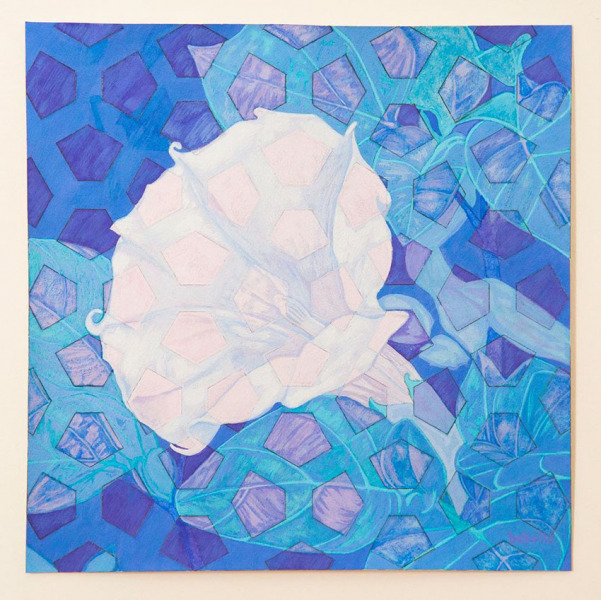
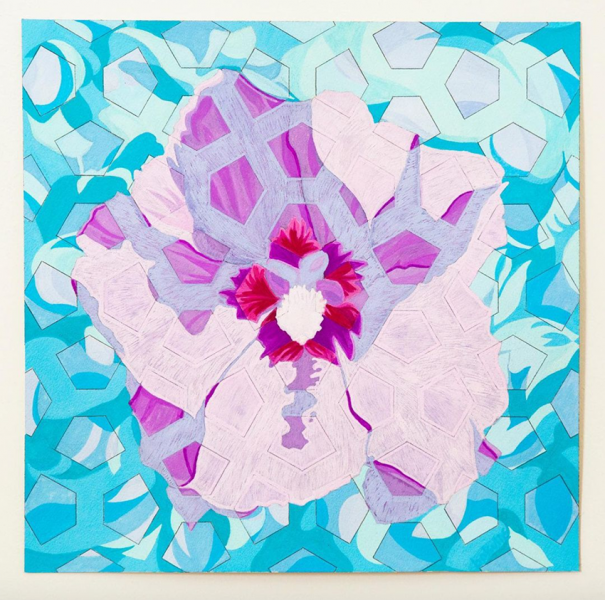
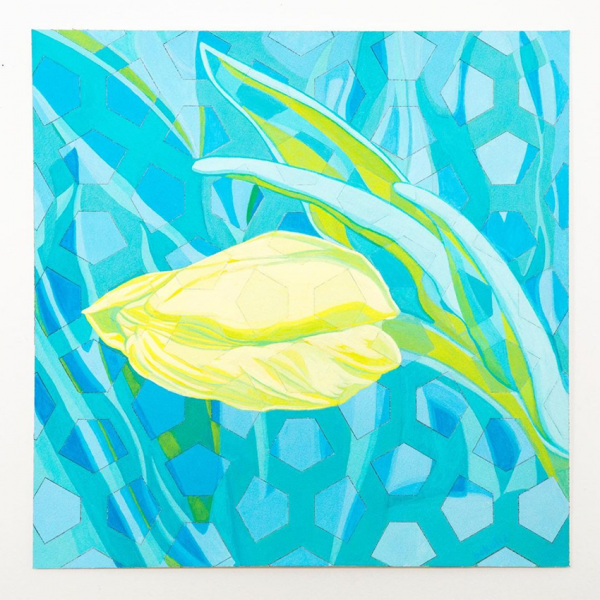
![21 [Andy Akiho] Oil on Linen, 36in x 72in © 2020 Jakob Bokulich 21 [Andy Akiho] Oil on Linen, 36in x 72in © 2020 Jakob Bokulich](https://beautifulhumans.info/wp-content/gallery/jakob-bokulichs-painting/cache/21-Andy-Akiho.jpeg-nggid03569-ngg0dyn-800x600-00f0w010c010r110f110r010t010.jpeg)
